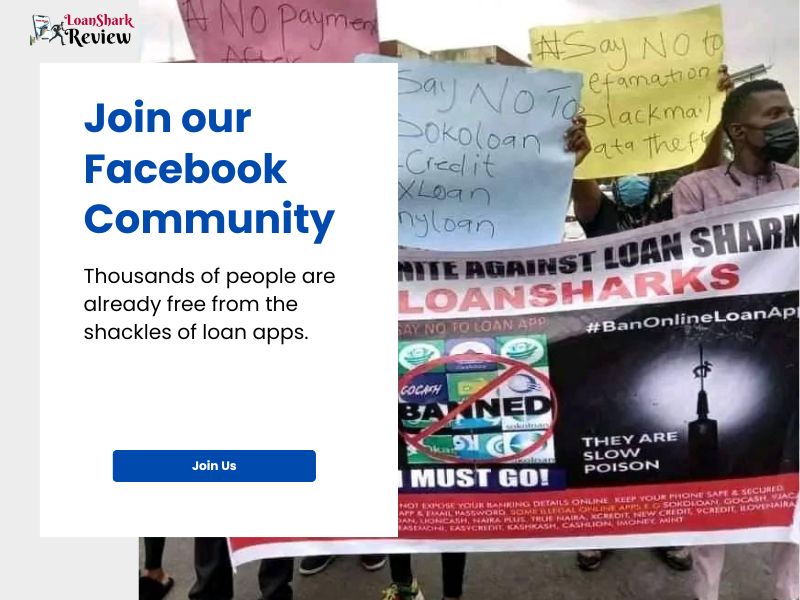| Interest Rate | 30% |
| Duration | From 30 Days |
| Access Level | Public |
| Company Name | Huaxin Lending Inc. |
| Phone 1 | 09482490098 |
| Phone 2 | |
| Website or Store | |
| Address | Lots 55 and 57 Crane St., Amaris Homes, Molino 4, Bacoor, Cavite |
| Category | Mild Loan |
| Company Email | support.faq@ohpeso.net |
| Views | 743 |
OhPESO VIP-Quick Approval Fund
Step by step guide to break free from loan apps
About OhPESO VIP-Quick Approval Fund
Loan Amount: ₱2,000 - ₱20,000 Loan Duration: 91 - 180 days Interest Rate (Annual): Minimum 3.5%, Maximum 24%
Example Calculation:
- If you choose a ₱5,000 loan with a term of 91 days (3 months), you will have an annual interest rate of 21.6%.
- Calculation: ₱5,000 + ₱5,000 * 21.6% / 360 * 91 = ₱5,273 (all fees included)
- Installments:
- Term 1 (30 days): ₱1,667 (loan principal)
- Term 2 (30 days): ₱1,667 (loan principal)
- Term 3 (31 days): ₱1,667 (loan principal) + ₱273 (loan interest)
About the Company
OhPeso VIP is a legal and compliant application developed by HUAXIN LENDING INC. Our SEC Registration Number is CS201904973 and the Certificate of Authority No. is 2926. Our primary goal is to provide effective and professional financial services to our customers.
How to Use OhPeso VIP
- Download and Install: Get OhPeso VIP from the app store.
- Register: Create an account with your personal details.
- Request a Loan: Apply for a loan directly from the home page.
- Eligibility: Users must be 20 years and above.
Legitimate Rights and Interests
With a good credit history, and by providing accurate and detailed information, users can obtain higher credit limits. Borrowers can apply for a specific amount based on their actual needs and will only pay interest on the amount withdrawn, not the entire credit limit.
Contact Us
If you need assistance, please reach out to our customer service:
- Email: support.faq@ohpeso.net
- Phone: 09482490098
- Address: Lots 55 and 57 Crane St., Amaris Homes, Molino 4, Bacoor, Cavite
OhPeso VIP, developed and invested in by HUAXIN LENDING INC., is dedicated to providing a seamless and secure financial experience. Explore the OhPeso app today for reliable and straightforward financial solutions tailored to your needs.
Expert Counsel
Loan apps can offer quick and accessible credit with minimal documentation and fast approval processes. However, these conveniences often come with high-interest rates, hidden fees, and sometimes predatory practices. Here's a detailed guide to help you avoid the pitfalls of loan apps and protect yourself when using them.
How to Avoid Relying on Loan Apps
- Build an Emergency Fund
- Explanation: Save enough to cover 3-6 months' worth of essential expenses. This financial cushion can help you manage unexpected costs without turning to high-interest loans.
- Best Practice: Regularly set aside a portion of your income into a dedicated savings account.
- Create and Stick to a Budget
- Explanation: Track your spending, prioritize necessities over wants, and allocate funds wisely. A well-planned budget can help you avoid financial shortfalls and reduce the need for loans.
- Best Practice: Use budgeting tools or apps to monitor your spending and adhere to your financial plan.
- Explore Alternative Credit Sources
- Explanation: Consider reputable options like banks, credit unions, or peer-to-peer lending platforms. These sources often offer more favorable terms compared to loan apps.
- Best Practice: Research different credit sources and compare their terms and interest rates.
- Improve Your Credit Score
- Explanation: A strong credit score can open doors to lower-interest borrowing options. Pay your bills on time, reduce outstanding debts, and check your credit report regularly to improve your score.
- Best Practice: Make consistent, on-time payments and reduce credit card balances to enhance your credit score.
- Cut Down on Unnecessary Expenses
- Explanation: Reduce discretionary spending to lessen the need for loans. Focus on essential expenditures and avoid splurging on non-essential items.
- Best Practice: Create a spending plan that prioritizes needs over wants and regularly review your expenses to identify areas where you can cut back.
Precautions When Using Loan Apps
- Review Terms and Conditions Carefully
- Explanation: Understand the interest rates, fees, repayment timelines, and penalties associated with the loan. This can help you avoid surprises and make informed decisions.
- Best Practice: Read the fine print and ensure you fully understand the loan agreement before committing.
- Verify Lender Legitimacy
- Explanation: Research the lender’s reputation, licensing, and regulatory compliance before borrowing. Ensure that you are dealing with a legitimate and trustworthy lender.
- Best Practice: Look up reviews and verify the lender’s credentials through regulatory bodies and trustworthy sources.
- Borrow Only What You Need
- Explanation: Limit your borrowing to essential needs to avoid excessive debt. Taking out more than necessary can lead to financial strain.
- Best Practice: Calculate the exact amount required and stick to borrowing just that.
- Set Realistic Repayment Goals
- Explanation: Plan your repayment strategy to avoid late penalties and high-interest charges. Make sure you can afford the repayments before taking out a loan.
- Best Practice: Create a detailed repayment plan that fits your budget and income, and stick to it.
- Monitor Your Credit Report
- Explanation: Keep an eye on how loan app transactions affect your credit profile. Regular monitoring can help you detect errors and potential fraud.
- Best Practice: Regularly review your credit report and dispute any inaccuracies promptly.
Smart Strategies for Loan Repayment
- Make Timely Payments a Priority
- Explanation: Paying on time helps you avoid penalties and additional interest. Set reminders or use automatic payments to ensure you don’t miss any due dates.
- Best Practice: Automate your payments or set up alerts to stay on track with your repayment schedule.
- Develop a Repayment Plan
- Explanation: Break down your debt into manageable installments that fit your budget. Stick to this plan to systematically pay off your loan.
- Best Practice: Use a debt repayment calculator or create a detailed plan to schedule your payments.
- Use Automatic Payments
- Explanation: Set up automatic transfers to ensure payments are made on time. This can help you avoid missed payments and associated penalties.
- Best Practice: Link your repayment account to your bank and schedule automatic payments to stay on track.
- Consider Debt Consolidation
- Explanation: Combine multiple debts into a single loan with a lower interest rate. This can simplify repayment and reduce the overall interest burden.
- Best Practice: Explore consolidation options with favorable terms and conditions to streamline your debt management.
- Communicate with Your Lender
- Explanation: If you’re experiencing financial difficulties, reach out to your lender to discuss potential payment extensions or revised payment plans.
- Best Practice: Be proactive and transparent about your situation to find workable solutions and avoid defaulting on your loan.
What to Do in a Financial Crisis
- Seek Professional Financial Advice
- Explanation: Consult a financial advisor or credit counselor for expert guidance on managing your finances and debts.
- Best Practice: Reach out to professionals who can help you navigate your financial challenges and develop a plan.
- Prioritize Essential Expenses
- Explanation: Focus on covering necessities like food, rent, and utilities. Cut back on non-essential spending to free up resources for essential expenses.
- Best Practice: Create a priority list of essential expenses and stick to it during financial hardships.
- Negotiate with Creditors
- Explanation: Discuss payment extensions or reductions with your creditors. Many lenders are willing to work with borrowers who communicate their financial difficulties.
- Best Practice: Contact your creditors directly and negotiate terms that are manageable for your financial situation.
- Explore Government Assistance
- Explanation: Look into programs like unemployment benefits or financial aid that can provide temporary relief during a financial crisis.
- Best Practice: Research and apply for assistance programs available in your area to get the support you need.
- Consider Debt Restructuring
- Explanation: Work with a credit counselor to reorganize your debt in a more manageable way. This can include negotiating lower interest rates or extended repayment terms.
- Best Practice: Develop a debt management plan that aligns with your financial capabilities and seek professional assistance if needed.
Red Flags to Watch for When Using Loan Apps
- High-Interest Rates
- Explanation: Interest rates above 36% APR are generally considered predatory and should be avoided. High rates can lead to significant financial strain.
- Best Practice: Avoid lenders that charge excessively high rates and seek out more reasonable options.
- Hidden Fees
- Explanation: Be cautious of origination fees, late fees, or prepayment penalties that can significantly increase the cost of the loan.
- Best Practice: Ensure all fees are clearly stated upfront and avoid lenders with ambiguous fee structures.
- Unclear Repayment Terms
- Explanation: Ensure you fully understand the repayment schedules, amounts, and potential penalties. Avoid lenders that do not provide clear information.
- Best Practice: Ask for detailed explanations of repayment terms and conditions before agreeing to a loan.
- Lack of Transparency
- Explanation: Be wary of lenders with unclear or misleading information. Transparency is key to making an informed decision.
- Best Practice: Choose lenders who offer straightforward and honest information about their services.
- Aggressive Marketing Tactics
- Explanation: Be cautious of loan providers who use pushy or deceptive advertising. Legitimate lenders typically do not need to resort to aggressive sales techniques.
- Best Practice: Avoid lenders who employ high-pressure sales tactics and seek out reputable, ethical loan providers.
Additional Tips for Safer Loan App Use
- Know Your Regulators
- Explanation: Familiarize yourself with relevant regulatory bodies, like the Central Bank of Nigeria, to report any suspicious lenders.
- Best Practice: Stay informed about regulatory bodies in your region and report any dubious practices to protect yourself and others.
- Research Loan App Reviews
- Explanation: Check feedback from multiple sources to gauge the lender’s reputation and practices.
- Best Practice: Read customer reviews and ratings to make informed decisions and choose reputable loan apps.
- Build Financial Knowledge
- Explanation: Educate yourself on personal finance basics and responsible borrowing. The more informed you are, the better decisions you can make.
- Best Practice: Take financial literacy courses and stay informed about best practices to manage your finances effectively.
By staying informed and cautious, you can navigate the world of loan apps responsibly and make better financial decisions. Always prioritize your financial well-being and choose options that align with your long-term goals.
Join our Facebook Group

Reviews
Related Loans
Safely Report A Loan Shark
If you have borrowed from a loan shark or are worried about someone else, we’re here to help and keep you safe. Learn how to break free from their grasp.

